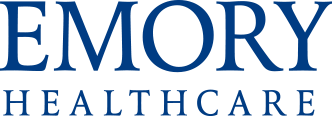Ravitch surgery for pectus excavatum
Pectus excavatum, sometimes called “concave chest” or “sunken chest,” is when the breastbone abnormally pushes inward, creating a depression in the chest. The condition can lead to concerns such as chest pain, shortness of breath, fatigue and heart palpitations.
The Ravitch procedure expands the chest cavity and repositions the breastbone. The surgeon lifts the sternum, trims extra cartilage and secures the ribs with a lightweight, metal plate.
Thoracic surgeon Rachel Medbery, MD, offers a customized planning approach to the Ravitch procedure. In fact, she developed this approach in collaboration with an industry partner.
During planning, Dr. Medbery uses 3D computer modeling to design and 3D print a sternal model that allows for a custom titanium plate to be made to fit your unique anatomy. Potential benefits of a patient-specific plate include:
- Shorter surgery times with less anesthesia
- More precise correction of the chest wall
The Ravitch procedure is a major surgery, and post-surgery pain control is vitally important. Our surgeons use cryoanalgesia (extreme cold) to block nerve signals in the chest wall. Cryoanalgesia can relieve pain for up to two to three months after surgery.
Physical and occupational therapy during your hospital stay helps you achieve the best outcome.
Reconstructive surgery for pectus carinatum
Pectus carinatum (sometimes called "pigeon chest") is when the breastbone and ribs push outward. Physical and occupational therapy are the most common treatments for adults with this condition. Most people with pectus carinatum do not need surgery.
Our surgeons can provide a personalized evaluation and recommend the best treatment for you.
Tumor resection and chest wall reconstruction
Emory Healthcare surgeons use advanced techniques to remove chest wall tumors. These tumors can be cancerous or noncancerous. They form in the area of the chest that protects the heart and lungs.
When necessary, thoracic surgeons work alongside specialists at Winship Cancer Institute of Emory University—Georgia’s only National Cancer Institute-designated Comprehensive Cancer Center. This enables us to provide advanced care for many chest wall cancers.
Rib and chest wall plating insertion and removal
Thoracic surgeons can treat traumatic chest injuries using small plates that stabilize and hold the chest wall in place. We customize the plate to follow the natural curve of your ribs. The plate usually stays in place permanently, but it is removable if needed.
Surgical repair and reconstruction for chest wounds
Most chest wounds heal with nonsurgical care. However, your surgeon may recommend surgery to repair or reconstruct some wounds.



